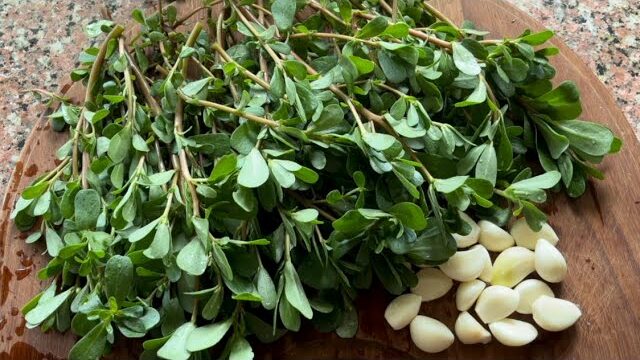
Purslane may not be the most common leafy green in your kitchen, but it’s definitely worth adding to your diet, especially if you follow a vegetarian lifestyle. This little-known plant is a powerhouse of nutrients, including the rare vitamin D and omega-3 fatty acids, which are typically found in animal products. Here’s why you should consider incorporating purslane into your meals.
Nutritional Benefits of Purslane
- Rich in Vitamin D: Purslane is one of the few plant sources of vitamin D, which is crucial for bone health and immune function. Vitamin D is typically obtained from sunlight exposure or animal-based foods, making purslane a valuable ingredient for those who limit their exposure to sunlight or follow a vegetarian or vegan diet.
- High in Omega-3 Fatty Acids: This plant is also a great source of omega-3 fatty acids, essential fats that are beneficial for heart health, reducing inflammation, and supporting brain function. Vegetarians often turn to flaxseeds or walnuts for omega-3s, but purslane can be an alternative or additional source.
- Loaded with Antioxidants: Purslane contains significant levels of vitamins E and C, which are powerful antioxidants that help protect the body against free radicals, potentially reducing the risk of chronic diseases such as heart disease and cancer.
- A Good Source of Minerals: It’s also rich in important minerals like iron, magnesium, and calcium, making it a great choice for maintaining healthy bones and overall wellness.
How to Incorporate Purslane in Your Diet
Salads: Fresh purslane leaves can be added to salads. Their slightly lemony and peppery taste makes them a refreshing addition to any greens mix.
Smoothies: For a nutrient boost, toss a handful of purslane into your morning smoothie. It blends well with fruits like bananas and berries for a nutritious start to your day.
Soups and Stews: Purslane can be cooked as well. It’s great in soups and stews, where it adds a slight thickness and a hint of flavor without overpowering other ingredients.
Sandwiches and Wraps: Replace lettuce or spinach with purslane in your sandwiches and wraps for an extra dose of vitamins and minerals.
Pesto: You can make a unique pesto with purslane instead of basil. Combine it with garlic, pine nuts, Parmesan cheese, and olive oil for a delicious spread on sandwiches or pasta.
Conclusion
Purslane is a versatile and nutritious plant that offers significant health benefits, especially for vegetarians looking to enhance their intake of essential nutrients like vitamin D and omega-3 fatty acids. By incorporating purslane into your diet, you’re not just adding variety; you’re also boosting your nutritional intake in a delicious and natural way. Give purslane a try and discover the benefits of this underappreciated superfood!



